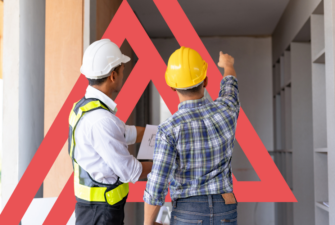
Translating the message / Sharing the practice – Voids
In this, our latest translating the message / sharing the practice bulletin we are focussing on VOIDS.
It is clear we will not see a relaxation of the lockdown measures any time soon. These continue to be challenging times for all organisations, especially in the housing sector, where we are supporting some of the most vulnerable people in the community. Yet housing providers have a key role to play in helping to secure the ongoing provision of critical services.
At ARK, we are playing our part, supporting our clients, signposting to the latest advice and using the knowledge and expertise within our team to help translate the messages about what we need to be doing into the right practices on the ground. The idea is to help our customers make well informed and considered decisions.
POLICY MESSAGE
Government has said that landlords should take a pragmatic, common-sense approach to non-urgent repairs (note: they have not said to only do urgent repairs).
There is pressure to reduce street homelessness to reduce exposure to Covid 19.
There is also an acknowledged increase in the levels of domestic violence being perpetrated and the need to provide homes for families who are affected by this and other issues.
There is a sense that organisations should be seeking ways of turning voids back to lettable homes and finding ways to enable residents to move in safely.
BEST PRACTICE
While it appears the numbers of properties becoming void have decreased, they have by no means stopped. Empty homes are a wasted resource and do not generate income. So, what is the answer?
The sector’s initial response in some cases has been to stop carrying out void works and not to make any but the most essential lettings. But others have continued to prepare properties for when lettings can recommence. As people’s minds start to turn to a relaxation of the current restrictions, we examine what a best practice approach to voids might look like:
- Adopt a positive stance that expects voids to be turned around and relet, whilst maintaining suitable protections for staff and prospective tenants. This will require a new (temporary) policy, practice and risk assessment framework to be put in place for teams (see our suggested risk assessment for repairs from last week’s Translating the message / Sharing the practice).
- Accept the voids process will take longer than normal and adjust KPI turnaround targets to reflect this.
- When a property becomes void, carry out an initial inspection to determine the level and feasibility of works needed. For example, it may not be possible to carry out works at present that require two person teams.
- You may need to have two void property categories; ‘voids for preparing and re-letting’ and ‘voids for mothballing’.
- Start from the premise that the property will have been occupied by somebody who has had Covid-19 so consider appropriate quarantine periods before entering the property following vacation.
- Review and revise your process for the receipt of keys to minimise risk of infection – this can involve for example fitting a key safe prior to vacation.
- Toolbox talk your team using technology to retain social distancing.
- Utilise your sub-contractors as best you can – they are keen to work with you to help you continue carrying out your activities such as clearing void properties and carrying out the essential void works.
- Maximise the use of multi-skilled operatives for preparing voids to help speed up the process as you may only be possible to have one operative in the property at any one time.
- Deep clean voids before handover so you can build the confidence of the new tenant in the safety of their new home.
- Work with your lettings team to develop an approach for how best to go about making a letting for the properties that are available following works.
- Then, work with your lettings team to ensure a smooth letting process that understands and minimises risks by respecting social distancing protocols and other health and safety requirements.
- Consider the use of your own team to help your tenants move (often removal firms are unwilling / unable to help tenants move). But safe working protocols are, we understand, being developed.
If you would like to talk about any aspect, know more or discuss how the our team could assist your organisation in the management of your void properties please contact
us at ark@arkconsultancy.co.uk.
News & Insights
Read the latest housing sector news, blogs, and commentary from ARK.

Building Safety
By Luke Beard ·The deadline for registering an existing higher risk building (HRB) with the regulator and submitting the required key building information …

Are you ready for the Supported Housing (Regulatory Oversight) Act 2023?
By Nick Sedgwick ·If you are a supported housing provider, you need to be aware of the new regulations that are about to …

International Women’s Day 2024
By Chris Seeley ·The theme of International Women’s Day 2024 is the question ‘What does it mean to truly inspire inclusion?’, we asked our …
Subscribe to our newsletters for the latest industry insights
Our newsletters and reports will keep you updated on topical issues from the sector as well as what’s happening at ARK.
